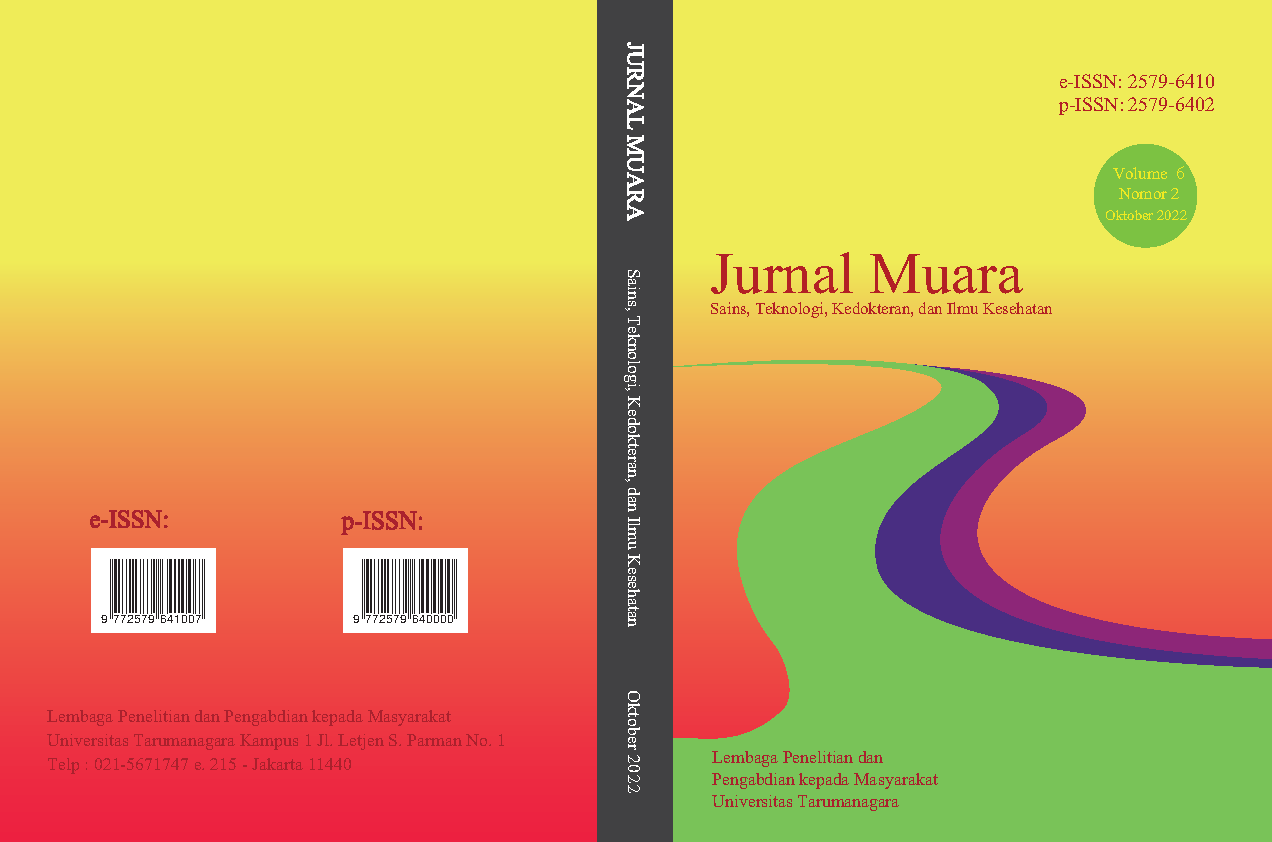PENERAPAN ASPEK HEALING ENVIRONMENT PADA DESAIN RUMAH SAKIT DARURAT BENCANA
Main Article Content
Abstract
The COVID-19 pandemic is also known as worldwide epidemic disease, the public is already familiar with it. The pandemic label on a disease triggers the government to prepare plans and possibly take emergency procedures to protect society. Due to insufficient emergency procedures, so it has an impact on the capacity of hospitals, which has filled its capacity and resulted in a lack of inpatient facilities. Not only pandemic, when a natural disaster occurs, it also causes infrastructure damage in the area that experiences it, so that other alternative places are needed, such as an emergency hospital and additional inpatient rooms. Besides, patients who are affected by the disaster experience trauma and stress because of the events that occurred, which can hinder the patient's recovery. Based on this, attention to patient psychology through a healing environment aspect approach is needed, considering that patients spend more time in the inpatient rooms. This study discusses the application of healing environment to emergency mobile hospital design so that it can help accelerate patient healing. This research uses qualitative methods with case studies and variabels related to psychological and architectural aspects. The result of this research is an emergency mobile hospital design that can accelerate the patient's healing process. The design results focus on inpatient rooms with an approach of form, material, structure, color, layout and the application of healing environment aspects in the inpatient rooms.
Keywords: emergency mobile hospital, healing environment, hospital facilities
Abstrak
Pandemi COVID-19 disebut juga sebagai wabah penyakit mendunia yang sudah tidak asing lagi didengar oleh masyarakat. Label pandemi pada suatu penyakit memicu pemerintah untuk mengaktifkan rencana kesiapsiagaan dan mungkin mengambil prosedur darurat untuk melindungi masyarakat. Dikarenakan prosedur keadaan darurat tidak cukup, sehingga berdampak pada kapasitas rumah sakit yang sudah memenuhi kapasitasnya dan mengakibatkan kurangnya fasilitas ruang rawat inap. Tidak hanya pandemi, pada saat terjadi bencana alam juga menyebabkan kerusakan infrastruktur di daerah yang mengalaminya, sehingga diperlukan tempat alternatif lainnya seperti rumah sakit darurat dan ruang rawat inap tambahan. Selain itu pasien yang terkena musibah mengalami trauma dan stress karena peristiwa yang terjadi, sehingga dapat menghambat kesembuhan pasien. Berdasarkan hal tersebut, perhatian terhadap psikologi pasien melalui pendekatan aspek healing environment sangat diperlukan. Mengingat pasien lebih banyak menghabiskan waktunya didalam ruang rawat inap. Tulisan ini membahas penerapan healing environment terhadap desain rumah sakit darurat bencana sehingga dapat membantu mempercepat penyembuhan pasien. Studi menggunakan metode kualitatif dengan variabel penelitian terkait aspek psikologi dan aspek arsitektur. Hasil penelitian berupa arahan aspek desain rumah sakit darurat bencana yang dapat mempercepat proses penyembuhan pasien. Arahan aspek desain berfokus pada ruang rawat inap dengan pendekatan bentuk, material, struktur, warna, organisasi ruang serta penerapan aspek healing environment pada ruang rawat inap.
Article Details

This work is licensed under a Creative Commons Attribution-NonCommercial-ShareAlike 4.0 International License.
This work is licensed under a Jurnal Muara Sains, Teknologi, Kedokteran dan Ilmu Kesehatan Creative Commons Attribution-ShareAlike 4.0 International License.
Authors transfer copyright or assign exclusive rights to the publisher (including commercial rights)
References
Agung, I. M. (2020). Memahami Pandemi COVID-19 dalam Perspektif Psikologi Sosial. Psikobuletin: Buletin Ilmiah Psikologi Vol.1, 68-84.
Anastasia, T. (2020, Juli 18). Retrieved from klikdokter: https://www.klikdokter.com/info-sehat/covid-19/efektifkah-air-purifier-dengan-filter-hepa-mencegah-virus-corona
Budiyantoputra, M.I.N., Hery B., Nurhamdoko B. (2021). Rumah Sakit Darurat Bencana Dengan Struktur Pneumatik Tiup. MINTAKAT: Jurnal Arsitektur Volume 22, Issue 2, 65-75.
Ching, F. D. (2008). Arsitektur Bentuk, Ruang, dan Tatanan. Jakarta: Erlangga.
Dhamanti, I. (2020, Mei 7). Retrieved from https://theconversation.com/mengapa-rumah-sakit-kewalahan-hadapi-pandemi-covid-19-dan-apa-dampaknya-bagi-keselamatan-pasien-136522
Dijkstra, K. (2009). Understanding Healing Environments: Effects of Physical Environmental Stimuli on Patiens’ Effects of Health and WellBeing. Enschede: Gildeprint Drukkerijen B.V.
Hendraningsih. (1985). Peran, Kesan Dan Pesan Bentuk-bentuk Arsitektur. Jakarta: Djambatan.
Iyendo, T., Uwajeh, P., & Ikenna, E. (2016). The Therapeutic Impacts of Environmental Design Interventions on Wellness in Clinical Settings: A Narrative Review. Complementary therapies in clinical practice, 174-188.
Joseph, N. (2020, November 24). Retrieved from hello sehat: https://hellosehat.com/health-tools/
Kementerian Kesehatan RI, D. d. (2015). . Pedoman Teknis Ruang Isolasi. Jakarta: Kementerian Kesehatan RI.
Lidayana, V., Alhamdani, M. R., & Pebriano, V. (2013). Konsep dan Aplikasi Healing Environment Dalam Fasilitas Rumah Sakit. Jurnal Teknik Sipil Universitas Tanjungpura, 419-421.
Pengadaan. (2020, mei 13). Retrieved from pengadaan.web.id: https://www.pengadaan.web.id/2020/05/jenis-dan-kelebihan-sandwich-panel.html
PT. Impack Pratama Industri Tbk. (2019, Agustus 2017). Retrieved from https://www.impack-pratama.com/: https://www.impack-pratama.com/mengenal-atap-polycarbonate-dan-kelebihannya/#:~:text=Kelebihan%20penting%20dari%20polycarbonate%20yaitu,rapuh%20untuk%20waktu%20yang%20lama.
Putri, D. H., Widihardjo, & Wibisono, A. (2013). Relasi Penerapan Elemen Interior Healing Environment. Journal of Visual Art and Design, 108-120.
Taylor, S. (2019). The Psychology of Pandemics: Preparing for the Next Global Outbreak of Infectious Disease. Cambrige: Cambridge Scholars Publishing.



